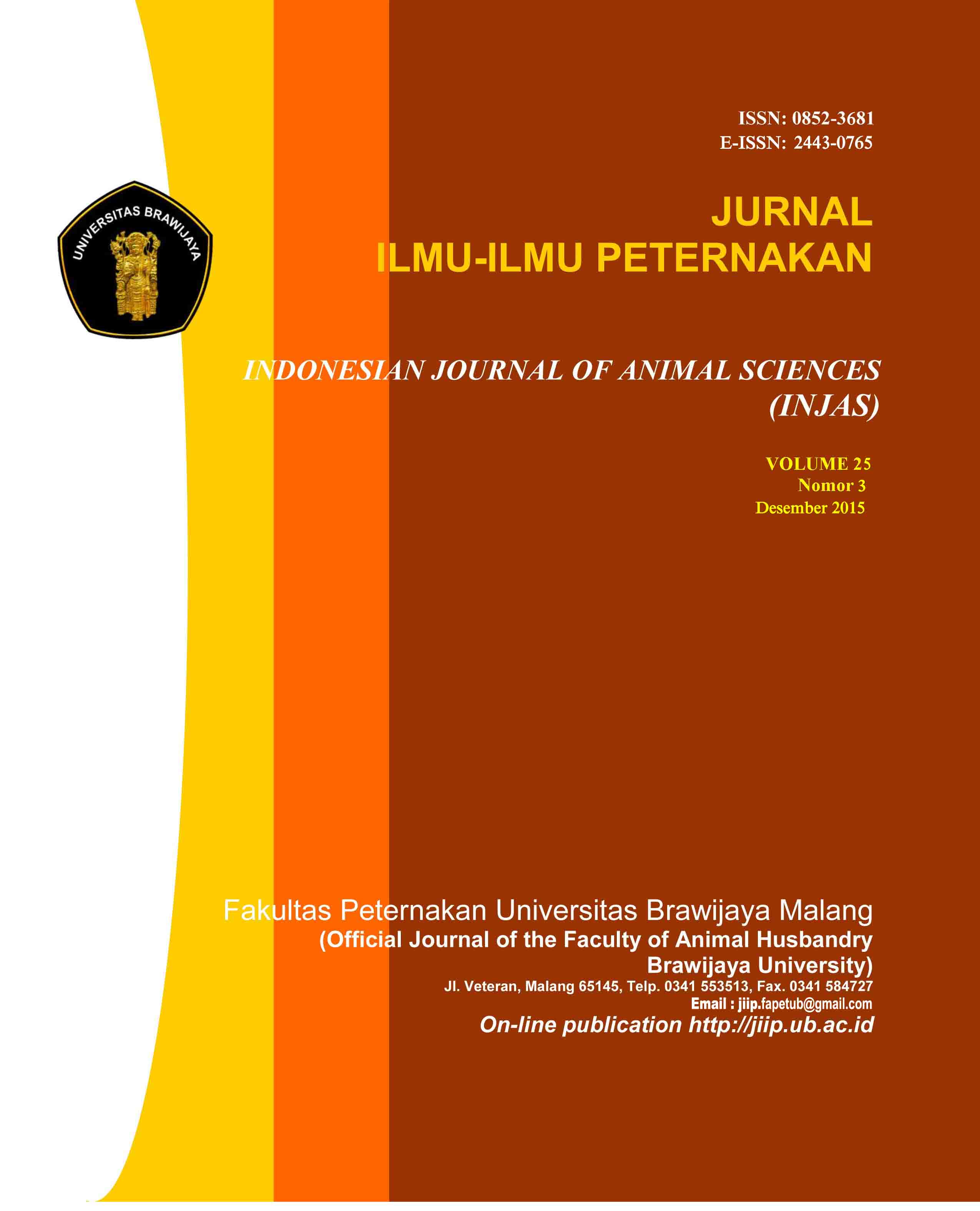Kecernaan protein dan energi metabolis akibat pemberian zat aditif cair buah naga merah (Hylocereus polyrhizus) pada burung puyuh japonica betina umur 16-50 hari
DOI:
https://doi.org/10.21776/ub.jiip.2015.025.03.06Abstract
Digestibility of crude protein and energy is used to measure digestibility in poultry, digestible shows of feed substances absorbed by the body which will affect the productivity of quail. This experiment was conducted to study the effect of red dragon fruit liquid additif (Hylocereus polyrhizus), digestibility protein and metabolizable energy by quail female age 16-50 days. Experiment used 200 japanese quails females, 7 weeks age with average body weight of 13.61±0.49 g. The study was conducted in battery cages. The experiment used Completely Randomized Design with 4 treatments and 5 replications: T0 (control), T1 (Award liquid additives red dragon fruit twice a day), T2 (one a day) and T3 (two days). The dose of a liquid additive is 5 ml/quail. Observation of digestibility of crude protein (KcPK) and the energy carried by the method of total collection for 3 days, measurements using a bomb calorimeter gross energy and protein analysis using Kjeldahl method.  Data were analyzed using a variety of test F at the level 5%, followed by Duncan's Multiple Range Test (UJBD) there is significant effect of the treatment each treatment was showed liquid additives red dragon fruit was not significant (P> 0.05) on crude protein digestibility and apparent metabolizable energy. The conclusion, the given of liquid additives red dragon fruit did not increase digestibility of crude protein and apparent metabolizable energy.
Â
Keywords: quail, red dragon fruit, digestibility of crude proteinDownloads
Published
How to Cite
Issue
Section
License
Authors who publish with this journal agree to the following terms:- Authors retain copyright and grant the journal right of first publication with the work simultaneously licensed under a Creative Commons Attribution License that allows others to share the work with an acknowledgment of the work's authorship and initial publication in this journal.
- Authors are able to enter into separate, additional contractual arrangements for the non-exclusive distribution of the journal's published version of the work (e.g., post it to an institutional repository or publish it in a book), with an acknowledgment of its initial publication in this journal.
- Authors are permitted and encouraged to post their work online (e.g., in institutional repositories or on their website) prior to and during the submission process, as it can lead to productive exchanges, as well as earlier and greater citation of published work (See The Effect of Open Access).
















